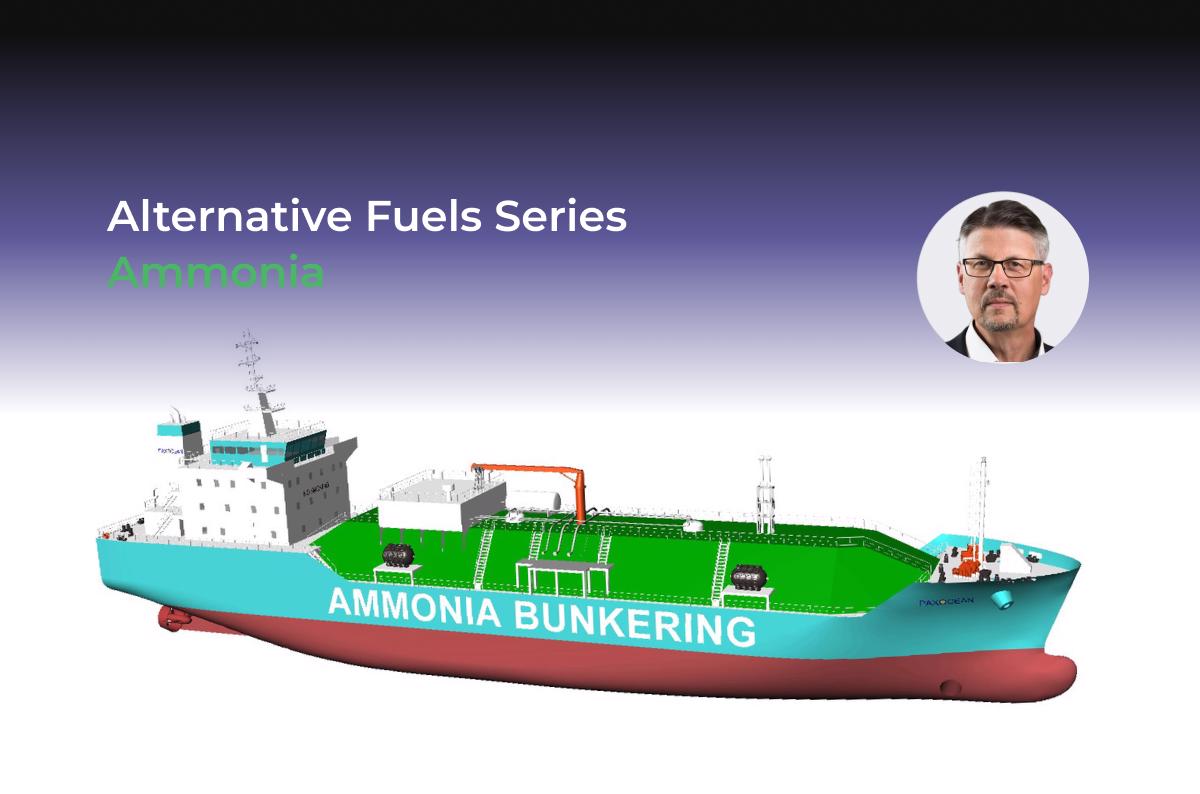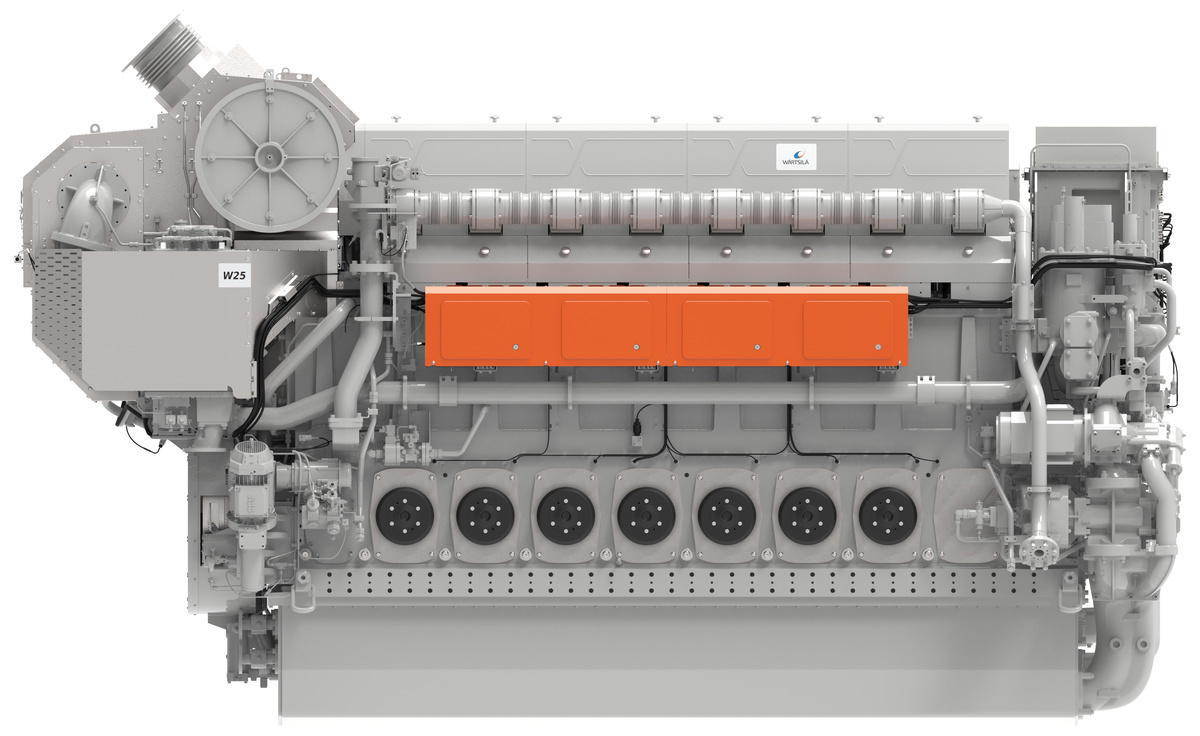Alternative Fuels Part 2: Ammonia, the bottled sunshine
Shipping voices believe that green ammonia can dominate the marine fuel transition, but how are they preparing for its use? Wärtsilä Marine Power gives us a sneak peek at its ammonia-ready engine.

Green ammonia has earned the moniker "bottled sunshine" from the US Department of Energy as it can literally be produced from air and sunshine. It is 100% carbon-free when produced with renewable or nuclear energy, relatively easy to store and transport, and efficient compared to other alternative marine fuels with zero-carbon potential.
The International Energy Agency estimates that ammonia can meet 45% of global bunker demand by 2050 in a net-zero CO2 emissions scenario for global shipping. Classification society DNV has called it "the fuel of the future" for shipping. The reality, however, might not be as rosy as this outlook. Ammonia does carry some drawbacks that can hinder its use as a “true zero-emission” marine fuel, if not addressed deliberately.
Global engine manufacturer Wärtsilä has been making strides towards enabling ammonia to be consumed in ship engines and aims to launch an engine running on pure ammonia by next year.
But what challenges have Wärtsilä faced when it comes to building ammonia engines, and how has it been working to overcome them? To look into this, ENGINE has spoken to 25-year industry veteran and Mikael Wideskog, director of sustainable fuels and decarbonisation at Wärtsilä Marine Power.
 PHOTO: Demonstration of Wärtsilä 25, the latest addition to Wärtsilä’s engine portfolio for fuel flexibility. Wärtsilä Marine Power
PHOTO: Demonstration of Wärtsilä 25, the latest addition to Wärtsilä’s engine portfolio for fuel flexibility. Wärtsilä Marine Power
Pure ammonia and pilot fuels
Wideskog says that for a ship engine to switch from running on an ammonia blend to pure ammonia would require a complete redesign. This is because ammonia's high autoignition temperature and slow combustion rate means that it burns considerably slower than conventional oil-based fuels - a key concern for efficient combustion.
Wärtsilä has been developing a combustion concept for ammonia-ready engines that still uses fossil fuel or biofuel as a pilot fuel to increase the initial combustion rate. But this need for a pilot fuel prevents ammonia from being a truly zero-emission fuel, at least for now.
Another leading marine engine maker, Germany's MAN Energy Solutions (MAN ES), has been developing an ammonia engine with a target launch date before the middle of the decade, too. Its ammonia engine also uses pilot fuel to ensure controlled combustion.
MAN ES tests have shown a 95% carbon emission reduction for ammonia combustion compared to heavy fuel oil. It has also pointed out that ammonia emits virtually no sulphur oxides (SOx), particulate matter or unburned hydrocarbons when burned.
“There will be only a minor contribution from the injected pilot fuel, which has the purpose of ensuring a timed and controlled combustion of ammonia,” MAN ES has said.
However, neither of the companies rule out ammonia-run vessels with zero emissions in the future. Wideskog says: “As demand for reducing greenhouse gases increases further, and as future fuels become cheaper and more widely available, the quantity of green fuel blend-in is increased. In the end, our vision is to enable our customers to only use zero-carbon fuel.”
Brian Ostergaard Sorensen, head of R&D for two-stroke businesses at MAN ES, says the ultimate goal is to run two-stroke engines entirely on carbon-neutral and carbon-free fuels produced from renewable energy using Power-to-X. But he acknowledges that “Until we have enough green fuel all over the world, we need to develop flexible fuel solutions now to move us towards green shipping.”
 PHOTO: Prototype of Wärtsilä's multi-fuel medium-speed four-stroke marine engine. Wärtsilä Marine Power
PHOTO: Prototype of Wärtsilä's multi-fuel medium-speed four-stroke marine engine. Wärtsilä Marine Power
Hydrogen + nitrogen = ammonia
Nitrogen presents a second obstacle to scaling ammonia-fuelled shipping. The "Haber-Bosch" process produces ammonia by combining airborne nitrogen with hydrogen produced from steam methane reforming of natural gas or water electrolysis, in the presence of iron catalysts. As a result, ammonia-fuelled engines emit high levels of nitrogen oxides (NOx), and nitrous oxides (N2O) – a greenhouse gas with very high global warming potential.
As a solution to reducing these emissions, Wärtsilä is exploring various concepts. “Ammonia does require some abatement to handle the NOx emissions and possible ammonia gas releases, with the latter potentially being handled by a wet scrubber system,” says Wideskog.
The company will also use existing solutions like selective catalytic reduction, which lowers nitrogen oxide levels in exhaust gases. Wideskog says projects like these are helpful for developing catalyst setups for marine applications.
Potentially lethal leaks
Ammonia's main drawback, however, is its toxicity, which makes some second-question whether it can enter the mainstream fuel market. Lloyd's Register has reported that even tiny 0.25% concentrations of ammonia in the air can be fatal. DNV recommends installing double wall piping around engines, “so that the pipe containing ammonia is surrounded by a ventilated space, making it easy to detect leaks.” Wärtsilä's Wideskog recommends using ammonia-resistant materials, sealants, and liquids to prevent leaks and corrosion.
 PHOTO: Concept design of an ammonia-powered ship. C-job Naval Architects
PHOTO: Concept design of an ammonia-powered ship. C-job Naval Architects
From cargo to fuel
Fortunately, the shipping industry has been transporting ammonia as bulk cargo for almost a century and is aware of the potential risks surrounding it. Experiences gained from handling ammonia cargo can be applied when setting up systems and training people to bunker it as a marine fuel.
A number of shipping companies have been working to develop ammonia-powered vessels within this decade, including Japanese container ship firms K Line, NYK, and MOL.
And although "the transition to carbon-free fuels is still a vessel lifetime away,” Wideskog says, “Wärtsilä is seeing a lot of interest from customers for its dual-fuel and ammonia-ready engines."
“That’s why we are developing combustion technologies that can be used with fuels that are not yet available, to ensure that vessels built today can operate efficiently for their entire lifetime and to avoid the risk that those vessels become stranded assets,” he adds.
To prepare for the use of ammonia as bunker fuel, Wärtsilä is working on a project called "Ammonia 2-4" with the naval architect C-Job, DNV, shipowner Mediterranean Shipping Company, and the National Research Council (CNR) of Italy. In this project, the consortium will test two-stroke engines for retrofits and four-stroke engines for newbuilds.
“The outcomes of the project will include a lab-based demonstrator for the four-stroke ammonia engine, and a lab-based test engine followed by a vessel retrofit for the two-stroke version by 2025,” explains Wideskog. Furthermore, it will set up a framework for regulating ammonia and a guide for safe fuel handling.
By Konica Bhatt
Please get in touch with comments or additional info to news@engine.online





